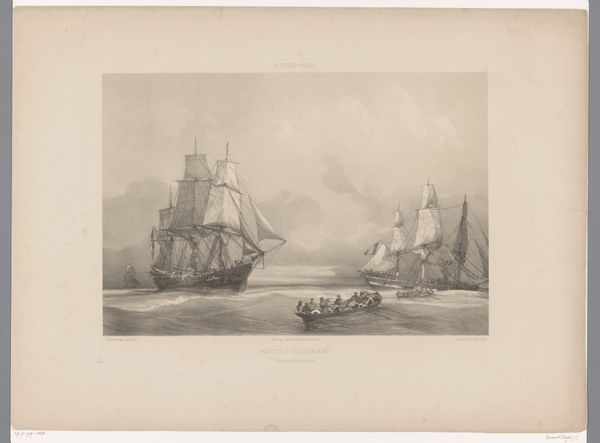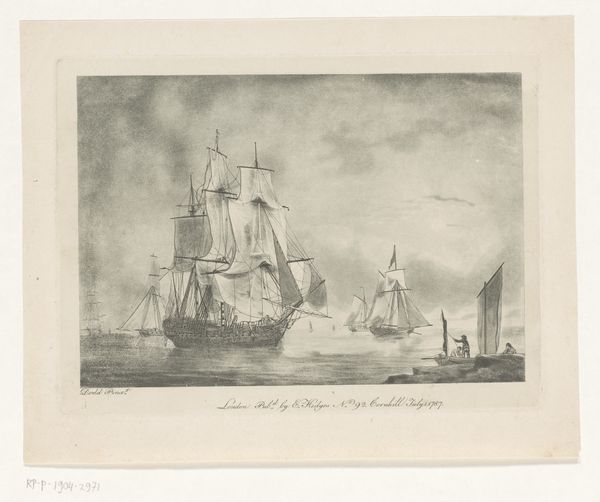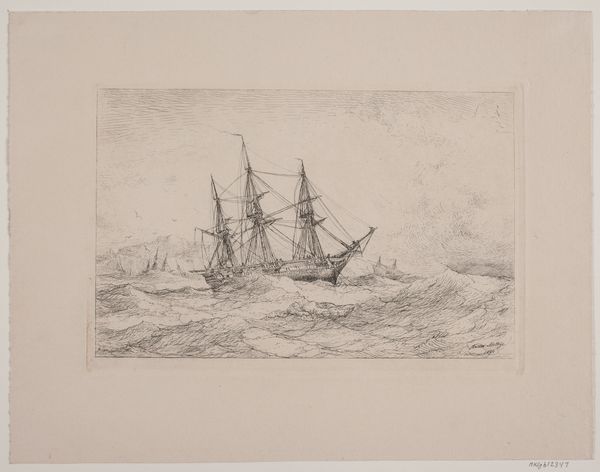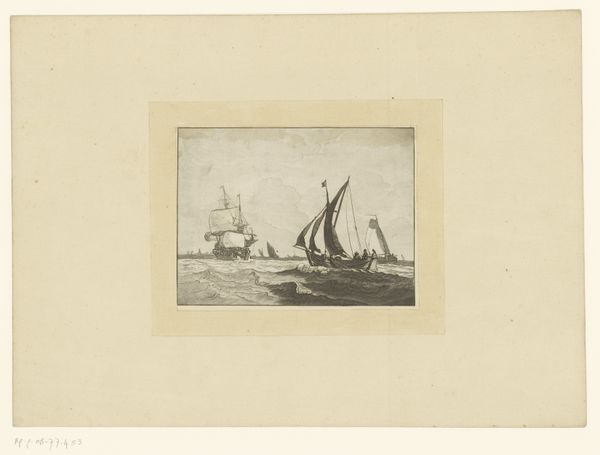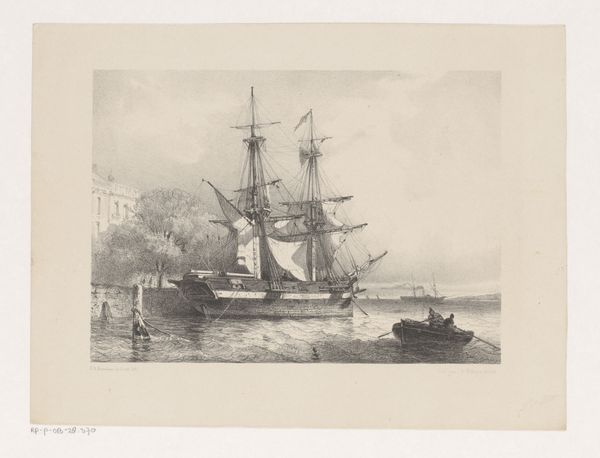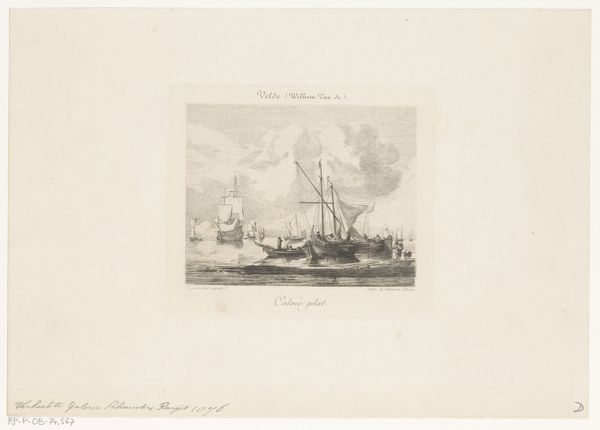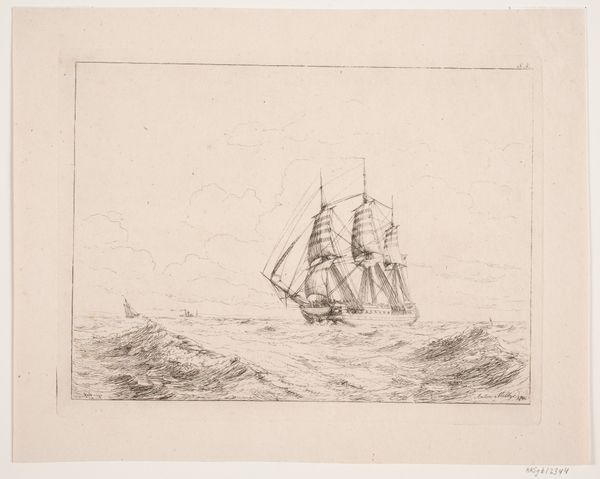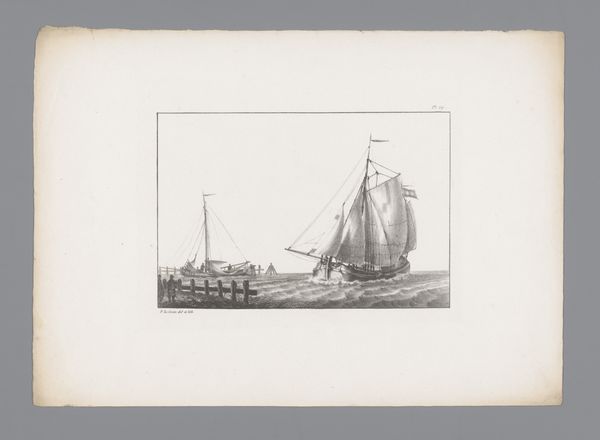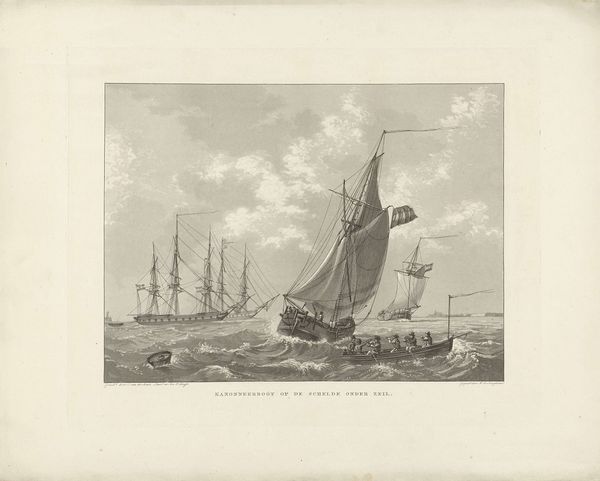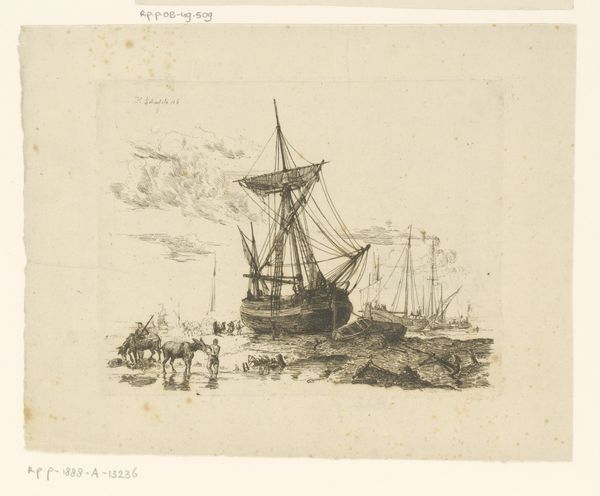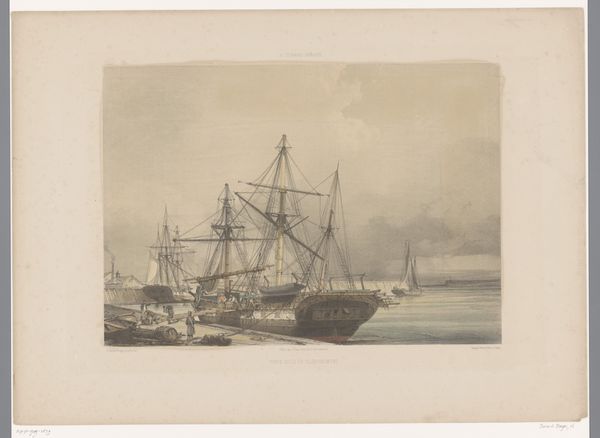
drawing, lithograph, print, pencil
#
drawing
#
lithograph
# print
#
landscape
#
romanticism
#
pencil
#
watercolour illustration
#
history-painting
#
watercolor
Dimensions: height 418 mm, width 568 mm
Copyright: Rijks Museum: Open Domain
Editor: This lithograph, "Franse walvisvaarder" or "French Whaler," made in 1847 by Jean Baptiste Henri Durand-Brager, portrays a dramatic scene at sea. The swells look so threatening. What sort of stories or historical memory does this piece evoke for you? Curator: The most immediate symbols that strike me are those of man versus nature, rendered quite explicitly here. What kind of emotional weight do the images of the whaling ship and small boat convey, considered against the larger history of whaling, in particular, and also maritime power at the time? Editor: Well, there's the obvious sense of struggle, a fight for survival. The size difference between the ship and the small boat amplifies the risk. I also get the sense of isolation. Curator: Yes, and I'd venture that the artist intended that to be read in relation to France’s cultural memory – this painting was created during a time of intense colonial activity. I am thinking about maritime power as well. The dominance and vulnerability – often simultaneous - of seafaring empires, or the risks they were prepared to take...what stories do the tools on board the ship bring to mind, given they served also as instruments of oppression in some regards? Editor: I hadn't considered the implications of colonialism here. That's a darker, more complex reading of the print than I initially imagined, I must admit. It makes me think of the cultural impact and human cost associated with resource extraction and imperial ambitions during that era. Curator: Exactly. This image, seemingly just a scene of maritime activity, is actually a potent reminder of France’s legacy of exploration, exploitation, and its complex relationship with the sea. I believe we see a powerful combination of Romantic idealism with stark reality here. Editor: That really changes how I see it. Thanks – it gives me a lot to reflect on about the interplay between art, history, and cultural memory.
Comments
No comments
Be the first to comment and join the conversation on the ultimate creative platform.
